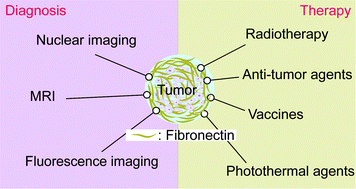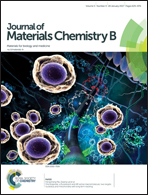Targeting fibronectin for cancer imaging and therapy
Abstract
During cancer progression, the extracellular matrix (ECM) undergoes dramatic changes, which promote cancer cell migration and invasion. In the remodeled tumor ECM, the fibronectin (FN) level is upregulated to assist tumor growth, progression, and invasion. FN serves as a central organizer of ECM molecules and mediates the crosstalk between the tumor microenvironment and cancer cells. Its upregulation is correlated with angiogenesis, cancer progression, metastasis, and drug resistance. A number of FN-targeting ligands have been developed for cancer imaging and therapy. Thus far, FN-targeting imaging agents have been tested for nuclear imaging, MRI, and fluorescence imaging, and for tumor detection and localization. FN-targeting therapeutics, including nuclear medicine, chemotherapy drugs, cytokines, and photothermal moieties, were also developed for cancer therapy. Because of the prevalence of FN overexpression in cancer, FN targeting imaging agents and therapeutics have the promise of broad applications in the diagnosis, treatment, and image-guided interventions of many types of cancers. This review will summarize the current understanding of the role of FN in cancer, discuss the design and development of FN-targeting agents, and highlight the applications of these FN-targeting agents in cancer imaging and therapy.

- This article is part of the themed collection: Recent Review Articles

 Please wait while we load your content...
Please wait while we load your content...